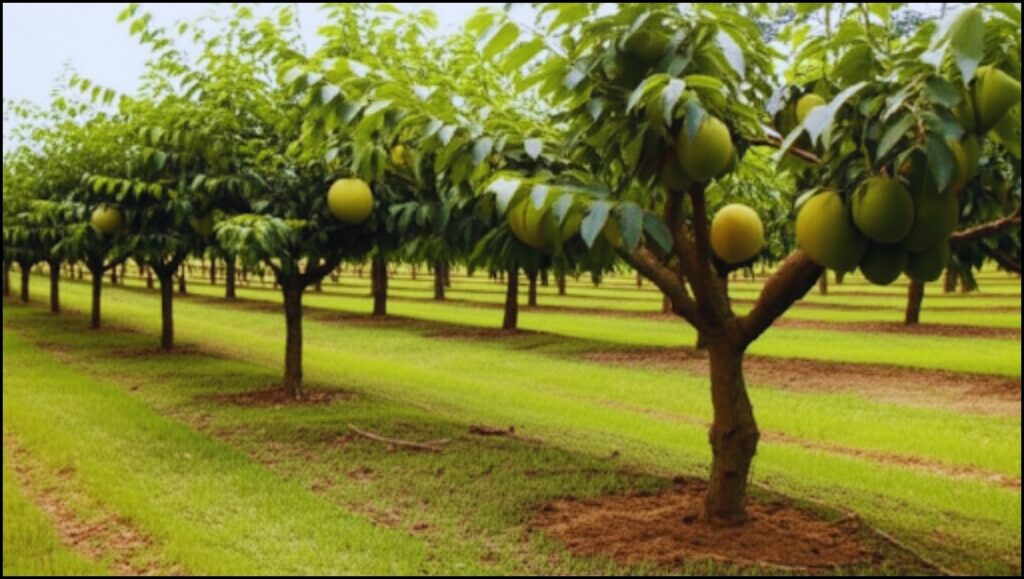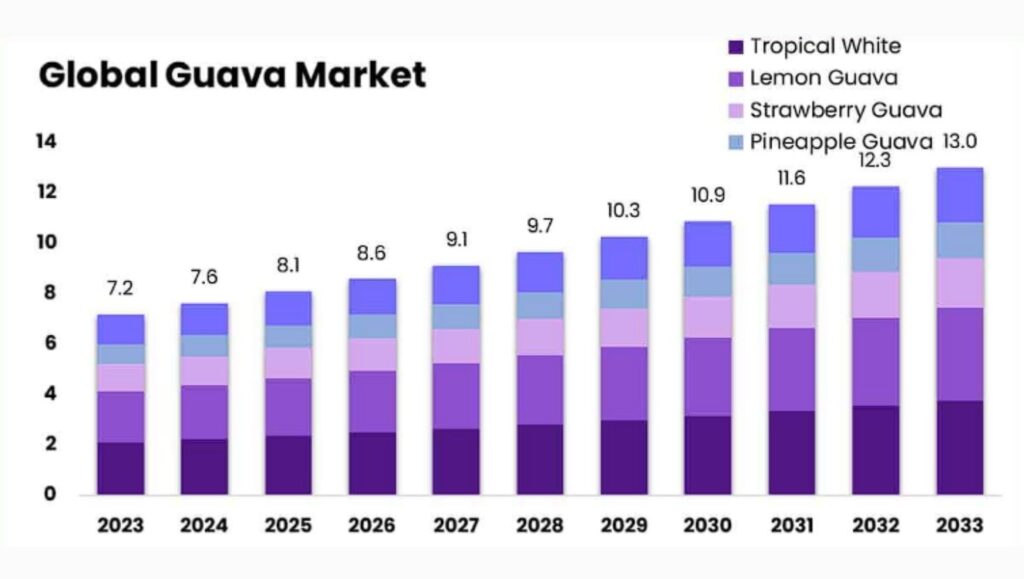India stands as the undisputed global leader in guava farming, contributing nearly half of the world’s total production. This tropical fruit, celebrated for its nutritional value and versatility, has become a significant agricultural commodity, driving economic activity and inspiring cultivation innovations worldwide. While India leverages its ideal climate and vast agricultural lands, other nations are also carving out niches in the global guava market through specialized cultivation and product diversification.

India produced approximately 26.2 billion kilograms of guava in 2023, representing a dominant 43.03% share of the global output, according to data from Tridge. This substantial volume underscores the fruit’s importance to the Indian agricultural landscape. Following India, key global producers include Indonesia, China, Mexico, and Pakistan, each with substantial production volumes and unique cultivation practices that reflect local conditions and market demands.
India’s Guava Prowess: A Blend of Tradition and Scale
Guava farming in India is deeply embedded in its agricultural heritage, benefiting from diverse agro-climatic zones that allow for year-round cultivation. Major guava-producing states include Uttar Pradesh, Madhya Pradesh, Andhra Pradesh, Bihar, Tamil Nadu, and Telangana. The fruit is considered the fourth most important in terms of area and production after mango, banana, and citrus. Indian varieties such as Allahabad Safeda, Sardar (Lucknow 49), Lalit, and Shweta are highly sought after for their taste, texture, and high yield potential.
“India’s supremacy in guava production isn’t just about volume; it’s also about the genetic diversity and traditional knowledge that has been passed down through generations of farmers,” explains Dr. Ritu Singh, an agricultural economist at the Indian Council of Agricultural Research (ICAR). “This deep understanding, coupled with government support and a vast domestic market, provides a robust foundation for the industry.”
However, Indian guava farmers face challenges, including damage due to aberrant weather conditions, pest and disease management, and issues related to post-harvest handling and market access. Pests like fruit flies, bark-eating caterpillars, and mealybugs can significantly impact yields and fruit quality, requiring diligent pest management strategies. Additionally, despite being the largest producer, India’s share in global guava exports is comparatively lower, with countries like Thailand and Mexico leading in fresh guava exports. In 2023, India exported approximately $154.2 million worth of guavas, ranking 6th globally in export value, according to Tridge data.
Global Guava Landscape: Diversity in Cultivation and Market Focus
Beyond India, other nations contribute significantly to the global guava market, each with distinct approaches to cultivation and marketing:
China: Domestic Consumption and Modernization
China, the second-largest producer, cultivates guava primarily in its southern provinces, including Guangxi and Guangdong. While a major producer, China’s guava output is largely consumed domestically, often as fresh fruit, juices, or preserves. The country is investing in modern agricultural research to develop high-yield, disease-resistant guava cultivars.
Indonesia: Tropical Production and Processing Expansion
Indonesia, a key player in Southeast Asia, boasts significant guava production, particularly in Java and Sumatra. The fruit is a staple in Indonesian households, consumed fresh or in traditional beverages. Indonesia is actively expanding its guava processing industry, producing juices, jams, and dried snacks for regional and domestic markets.

Brazil: Sweet Treats and Export Growth
Brazil, South America’s largest guava producer, has a rich tradition of guava cultivation in its tropical and subtropical zones. The country is renowned for “goiabada” (guava paste) and other guava-based confections. Brazil’s guava exports, particularly processed products, are growing, with increasing interest from European markets.
Thailand: Export-Oriented and Value-Added Products
Thailand, while having a smaller overall production volume compared to India or China, stands out as a top exporter of fresh guavas and innovative value-added products. Thai guavas are prized for their crisp texture and balanced sweetness. The country excels in producing dried guava snacks, low-sugar guava juices, and even guava leaf extracts for cosmetics and health products, demonstrating a strong focus on market diversification. In 2023, Thailand’s fresh guava exports reached $642.1 million, making it the top exporter globally, as per Tridge.
Innovations and Challenges in Guava Cultivation
Across the globe, advancements in guava cultivation are addressing key challenges. Integrated pest management (IPM) strategies are gaining traction to reduce reliance on chemical pesticides, promoting sustainable farming practices. Research is also focused on developing disease-resistant varieties and improving post-harvest technologies to extend shelf life and reduce waste. Techniques such as “bending technology,” which involves bending branches downward to promote starch accumulation and enhance flowering, are being explored to increase yields and improve fruit quality.
For India, a significant challenge remains enhancing its export competitiveness. While domestic demand is strong, global markets require adherence to stringent quality standards, efficient cold chain logistics, and effective market linkages. “Improving post-harvest infrastructure and adopting global best practices in packaging and processing will be crucial for India to fully capitalize on its immense guava production capacity on the international stage,” states Priya Sharma, a trade analyst specializing in agricultural commodities at the International Centre for Trade and Sustainable Development.
The global demand for guava and its processed products continues to rise, driven by increasing consumer awareness of its health benefits, including high Vitamin C content, dietary fiber, and antioxidants. This growing demand creates opportunities for both traditional agricultural powerhouses like India and emerging players to innovate and expand their footprint in the lucrative global fruit market.
Which Country is Famous for Dragon Fruit and Why It Matters for Your Garden
